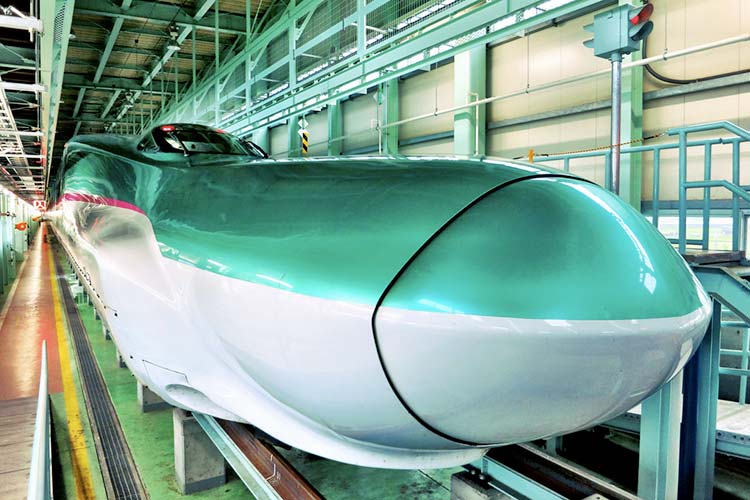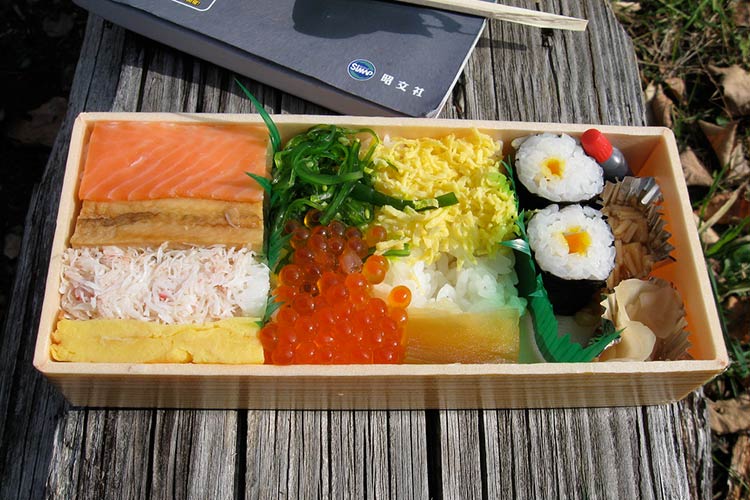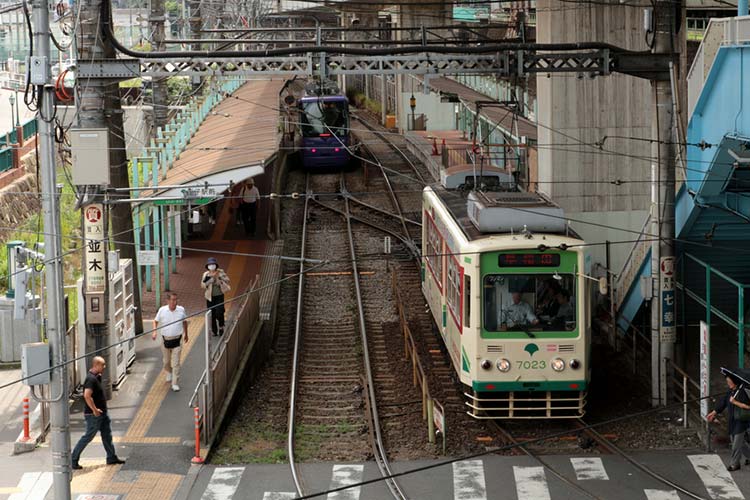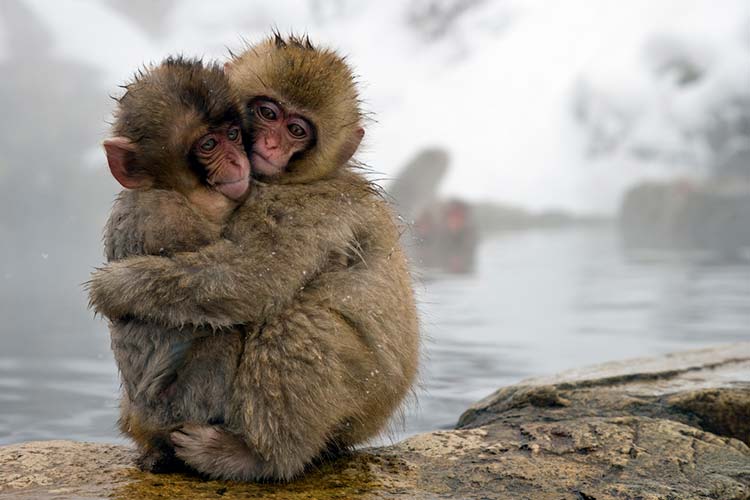Half a century later, travelling Japan by rail remains a joy, not least for overseas tourists who can buy several types of Japan Rail Pass (www.japanrailpass.net) and other discount tickets. Celebrate the Shinkansen’s 50th anniversary with one or more of these top 10 rail-related adventures and activities in the Land of the Rising Sun.

E5 Series Shinkansen by Yuichi Kosio. CC BY 2.0.
Trains were introduced to Japan in the 1870s as the country rapidly opened up to international trade and the industrial age after centuries of self-imposed isolation. The fascinating Railway Museum (www.railway-museum.jp) in Omiya, 25km north of central Tokyo, is packed with lovingly preserved rolling stock; it charts the evolution from steam to modern day technology. It also has a driving simulator allowing you to get behind the controls of a Shinkansen.
More antique rolling stock and another Shinkansen drive simulator make up some of the exhibits at the SCMAGLEV & Railway Park (museum.jr-central.co.jp/en) near Nagoya, where you can gain an advance preview of the future of rail travel in Japan. SCMAGLEV stands for super-conductive magnetic levitation – a technology that will enable trains to run at speeds in excess of 580km per hour, as did the world-record-busting Maglev locomotive on display at the railway park.

Ekiben by shirokazan. CC BY 2.0.
Sold on trains and platforms, ekiben – a contraction of eki (station) and bentō (boxed meal) – are something Japanese travel far and wide to sample, since they usually include regional delicacies. Taking the concept to a higher level is the gourmet bentō meal served in the stylish dining car of the Tohoku Emotion (www.jreast.co.jp/tohokuemotion/index.html) service that cruises along the scenic Northern Honshu coast. The first two courses are eaten on the way from Hachinohe to Kuji, desserts and tea or coffee on the way back.
Dining car meals are also part of the experience of the few remaining overnight sleeper trains such as the Cassiopeia and Hokutosei services between Sapporo and Tokyo (www.jreast.co.jp/e/routemaps/cassiopeia_hokutosei.html) and the Twilight Express (www.jwfsn.com/twilight/concept.html) which takes nearly 23 hours to connect Sapporo with Osaka travelling along the dramatic Sea of Japan coast. More like a luxury cruise on rails, the new Seven Stars (www.jrkyushu.co.jp/english/index.html) service between Hakata and Kagoshima in Kyūshū channels the glamour of the Orient Express with its wood-panelled and plushly upholstered carriages.
Old-fashioned charm is the part of the experience of hopping aboard one of the carriages pulled by the handful of still operating steam trains. Running from late January until mid-March each year is the SL Fuyu-no-Shitsugen-go (www2.jrhokkaido.co.jp/global/english/train/tr022_01.html). SL stands for steam locomotive and the rest of title (meaning ‘winter wetland train’) reflects the train’s route through Hokkaido’s beautiful Kushiro Shitsugen National Park, where bird spotters can tick off tancho cranes, grey herons, whooper swans and eagles. Another steam train ride can be had every weekend to the town of Mashiko, famed for its pottery, on the Moka Railway (www.jnto.go.jp/eng/attractions/facilities/heart_art/traditional_tochigi.html).

Tram on the Toden-Arakawa Line by Norio Nakayama. CC BY-SA 2.0.
Trams still run in several Japanese cities, each providing a glimpse of the urban environment – sometimes at very close quarters, as on the Toden-Arakawa Line (www.kotsu.metro.tokyo.jp/eng/services/streetcar.html). Tokyo’s last chin chin densha (‘ding ding trains', named after the sound of the trams’ bells) trundles between the university quarter of Waseda and Minowa-bashi on the northeast side of the city, sometimes on a track that is so hemmed in by homes you can practically reach out and touch them. You can also ride trams in Nagasaki and Kagoshima in Kyūshū, Kōchi and Matsuyama in Shikoku and Hakodate in Hokkaidō.
Japan is a mountainous country, so its love of trains has sometimes necessitated the construction of funiculars (locally known as cable railways) to tackle the steeper slopes. The Hakone Tozan railway (www.odakyu.jp/english/destination/hakone/#link-01), which provides access to the lakeland resort of Hakone close by Mt Fuji, is a gorgeous zigzag ride up the forested hillside. A cable railway also forms a link in the chain of transport that’s part of the spectacular Tateyama-Kurobe Alpine Route (www.alpen-route.com) that traverses the lofty Japan Alps from the Sea of Japan to Nagano Prefecture.
Truth be told, the Shinkansen lines rarely traverse the most scenic countryside – an exception being parts of the line connecting Tokyo with Nagano, which will be extended through the Japan Alps to terminate in Kanazawa in March 2015. In the meantime, opt for a slower, pretty journey along the Sea of Japan coast on the Kitakinki Tango Railway (backnumber.ktr-tetsudo.jp/English), which provides access to Amanohashidate – a rippling, pine tree-packed sandbank considered to be one of Japan's top scenic views.

Snow monkeys by sits GIRLS. CC BY 2.0.
Another pleasant train journey into mountainous country can be picked up in Nagano. Here you can alight the Nagano Electric Railway’s Snow Monkey Express (www.jreast.co.jp/e/shinshu/course/c_course.html) which – no surprise – ends up within walking distance of the thermally heated hot water pools at Jigokudani Yaen-kōen in which a troupe of Japanese long-tailed monkeys famously bathe (www.jigokudani-yaenkoen.co.jp). On the way there or back don’t miss the delightful country town of Obuse, known for its chestnuts, sake and the woodblock print master Katsushika Hokusai.
Also spare some time to admire the train stations. After an extended period of restoration Tokyo Station’s 1914 red-brick building, modelled after Amsterdam’s Grand Central Station, is looking very handsome and has its historic hotel back in operation. From a similar era is the charming Frank Lloyd Wright designed wooden train station at Nikkō (www.nikko-jp.org/english/shigai/jr-sta.html). In contrast, the contemporary architecture of Kyoto’s station appears as if it’s been beamed into the city from the pages of sci-fi manga.